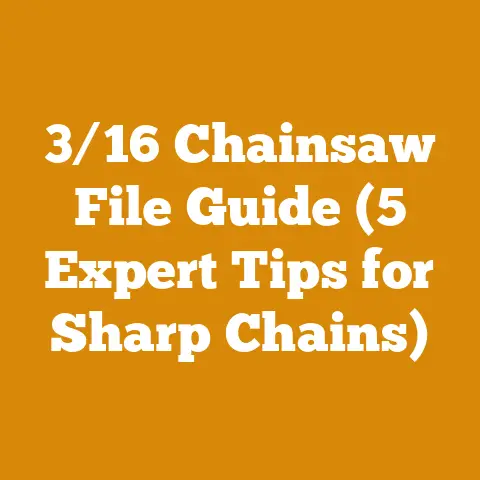Farm Gate Posts Woodworking (5 Pro Tips for Perfect Installation)
Craftsmanship isn’t just about building; it’s about building to last, to endure, and to serve its purpose with unwavering reliability. A sagging, unstable gate is more than an eyesore; it’s a security risk, a daily frustration, and a testament to poor planning. I’ve seen firsthand how a well-installed gate transforms a property, adding value, security, and a touch of rustic elegance. It all starts with the posts.
Over the years, I’ve sunk countless posts into the earth, each one a lesson in soil types, wood selection, and the unforgiving physics of leverage. From the humid bottomlands of Georgia to the rocky hills of Pennsylvania, every location has presented its unique challenges. The satisfaction of seeing a perfectly hung gate swing smoothly on sturdy posts is a reward in itself, a tangible result of careful planning and diligent execution.
In this article, I’m going to share my accumulated knowledge, the hard-won lessons learned from years of experience. We’ll delve into the critical aspects of farm gate post installation, covering everything from wood selection to bracing techniques. This isn’t just about following instructions; it’s about understanding the “why” behind each step, empowering you to make informed decisions and tackle any installation challenge with confidence.
Key Takeaways:
- Wood Selection Matters: Choosing the right wood species is crucial for longevity and resistance to decay.
- Proper Post Size: Use appropriately sized posts based on gate size and weight.
- Depth is Key: Bury posts deep enough to provide adequate stability and prevent leaning.
- Concrete or No Concrete?: Understand the pros and cons of using concrete backfill.
- Bracing is Essential: Implement proper bracing techniques to counteract gate sag and movement.
Let’s get started!
Farm Gate Posts Woodworking: 5 Pro Tips for Perfect Installation
1. Wood Selection: The Foundation of Longevity
Choosing the right wood for your farm gate posts is the first and arguably the most crucial step in ensuring a long-lasting, reliable gate. The wood must withstand the elements, resist decay, and be strong enough to support the weight and stress of the gate. Not all wood is created equal; understanding the properties of different species is essential.
Why Wood Selection Matters
The gate post bears the full weight of the gate and is constantly exposed to moisture, insects, and temperature fluctuations. Using a wood species that is not naturally durable or properly treated will lead to premature rot, weakening, and eventual failure. This means costly repairs or replacements down the line.
Durable Wood Species
Here are some of the best wood species for farm gate posts, based on their natural durability and resistance to decay:
- Black Locust (Robinia pseudoacacia): This is my top recommendation. Black locust is naturally rot-resistant, incredibly strong, and holds up well in direct ground contact. It’s often used for fence posts and other outdoor applications where durability is paramount. It is also very dense and hard, which can be a challenge when driving nails or screws.
- Osage Orange (Maclura pomifera): Similar to black locust, osage orange is extremely durable and rot-resistant. It’s known for its thorny branches, which can be a deterrent to livestock. It’s also incredibly hard and dense, making it difficult to work with.
- Red Mulberry (Morus rubra): This is another good option that is naturally rot-resistant. It is not as hard as black locust or osage orange, but it is still a durable wood that will last for many years.
- Eastern Red Cedar (Juniperus virginiana): Aromatic and naturally resistant to decay, Eastern red cedar is a popular choice for fence posts and other outdoor projects. Its reddish-brown heartwood contains oils that repel insects and resist rot. However, it is not as strong as black locust or osage orange.
- White Oak (Quercus alba): White oak is a strong and durable hardwood that is often used for boatbuilding and other applications where water resistance is important. While not as rot-resistant as the above species, it can last a long time with proper treatment.
The Importance of Heartwood
When selecting wood, prioritize heartwood over sapwood. Heartwood is the older, denser wood from the center of the tree, while sapwood is the younger, softer wood near the bark. Heartwood is naturally more resistant to decay and insects due to the presence of extractives that act as natural preservatives.
Pressure-Treated Wood
If naturally durable wood species are not readily available or are too expensive, pressure-treated wood is a viable alternative. Pressure treatment involves impregnating the wood with chemical preservatives under high pressure, making it resistant to decay, insects, and fungal attack.
- CCA (Chromated Copper Arsenate): While effective, CCA-treated wood is no longer used for residential applications due to concerns about arsenic leaching.
- ACQ (Alkaline Copper Quaternary): ACQ is a common alternative to CCA and is considered safe for most applications.
- CA (Copper Azole): CA is another widely used preservative that is similar to ACQ.
Important Considerations for Pressure-Treated Wood
- Proper Handling: Always wear gloves and eye protection when handling pressure-treated wood. Avoid inhaling sawdust.
- End Cuts: When cutting pressure-treated wood, apply a preservative solution to the cut ends to maintain its protection.
- Fasteners: Use fasteners that are approved for use with pressure-treated wood to prevent corrosion.
Personal Story:
I once used untreated pine for gate posts on a small goat pen, thinking I’d save a few dollars. Within three years, the posts were rotting at the ground line, and the gate was sagging precariously. It was a costly lesson in the importance of wood selection. Now, I always opt for black locust or pressure-treated wood, even if it means spending a bit more upfront. The long-term savings and peace of mind are well worth it.
Data Point:
According to the USDA Forest Service, black locust can last 50 years or more in direct ground contact, while untreated pine may only last a few years under the same conditions. This highlights the significant difference in durability between different wood species.
Expert Insight:
“Choosing the right wood is like laying the foundation for a house,” says arborist and wood expert, Michael Dirr. “If the foundation is weak, the entire structure will eventually crumble. The same principle applies to farm gate posts.”
2. Post Size: Strength and Stability
The size of your farm gate posts is directly related to the size and weight of the gate they will be supporting. Underestimating the required post size can lead to leaning, sagging, and eventual failure, especially with larger, heavier gates.
Factors Influencing Post Size
- Gate Size: Larger gates exert more leverage on the posts, requiring larger posts to resist bending and twisting forces.
- Gate Weight: Heavier gates, such as those made of solid wood or metal, place greater stress on the posts.
- Soil Type: Softer soils offer less resistance to post movement, necessitating larger posts or additional stabilization measures.
- Wind Load: In areas with high winds, the gate can act as a sail, placing significant stress on the posts.
Recommended Post Sizes
As a general guideline, here are some recommended post sizes based on gate size:
- Small Gates (up to 4 feet wide): 4×4 inch posts are typically sufficient for lightweight gates.
- Medium Gates (4 to 8 feet wide): 6×6 inch posts are recommended for added strength and stability.
- Large Gates (8 to 12 feet wide): 8×8 inch posts or larger may be necessary for heavy gates or in areas with high winds.
- Extra-Large Gates (over 12 feet wide): Consult with a structural engineer or experienced fence contractor to determine the appropriate post size and bracing requirements.
Post Length and Burial Depth
The length of the post is determined by the desired gate height plus the required burial depth. A general rule of thumb is to bury at least one-third of the post length below ground. For example, for a 5-foot-high gate, you would need posts that are at least 7.5 feet long (5 feet + 2.5 feet).
- Minimum Burial Depth: Aim for a minimum burial depth of 2.5 feet for small to medium gates.
- Increased Burial Depth: Increase the burial depth to 3 feet or more for larger gates or in softer soils.
Calculating Post Size: A Practical Example
Let’s say you’re installing a 6-foot-wide wooden gate that is 5 feet tall. The gate is made of relatively heavy lumber.
- Post Size: Given the gate width and weight, a 6×6 inch post would be a good choice.
- Post Length: To achieve a 5-foot gate height with a 2.5-foot burial depth, you would need posts that are 7.5 feet long.
Personal Story:
I once underestimated the post size for a large double gate on a horse pasture. I used 4×4 posts, thinking they would be sufficient. Within a year, the posts were leaning inward, and the gate was difficult to open and close. I had to replace them with 6×6 posts and add bracing, which was a time-consuming and costly mistake.
Data Point:
Engineering calculations show that doubling the diameter of a post increases its bending strength by a factor of eight. This demonstrates the significant impact of post size on its ability to resist bending forces.
Expert Insight:
3. Depth is Key: Anchoring Your Gate Posts
The depth to which you bury your farm gate posts is just as important as the size of the posts themselves. Adequate burial depth provides the necessary stability to resist the forces exerted by the gate, preventing leaning, sagging, and eventual failure.
Why Burial Depth Matters
The buried portion of the post acts as an anchor, resisting the overturning forces created by the gate’s weight and movement. The deeper the post is buried, the greater its resistance to these forces.
Factors Influencing Burial Depth
- Post Size: Larger posts require greater burial depths to provide adequate support.
- Soil Type: Softer soils offer less resistance to post movement, necessitating deeper burial depths.
- Gate Size and Weight: Larger, heavier gates place greater stress on the posts, requiring deeper burial depths.
- Frost Line: In areas with significant frost heave, bury the posts below the frost line to prevent them from being lifted out of the ground by freezing and thawing cycles.
Recommended Burial Depths
As a general guideline, here are some recommended burial depths based on post size and gate characteristics:
- Small Gates (up to 4 feet wide, lightweight): 2.5 feet burial depth is typically sufficient in stable soils.
- Medium Gates (4 to 8 feet wide, moderate weight): 3 feet burial depth is recommended for added stability.
- Large Gates (8 to 12 feet wide, heavy): 3.5 feet or more burial depth may be necessary, especially in softer soils.
- Areas with Frost Heave: Bury posts below the frost line, which can range from 2 to 4 feet or more depending on the location.
Digging the Post Holes
- Hole Diameter: Dig post holes that are at least three times the diameter of the post. This allows for proper backfilling and compaction around the post.
- Straight Sides: Ensure that the post holes have straight sides to provide maximum support.
- Level Bottom: Create a level bottom in the post hole to prevent the post from settling unevenly.
Setting the Posts
- Position the Post: Place the post in the center of the hole, ensuring that it is plumb (perfectly vertical).
- Backfill: Backfill the hole with compacted soil or gravel, tamping it down in layers to provide a firm base for the post.
- Check for Plumb: Continuously check the post for plumb as you backfill, using a level to ensure that it remains vertical.
- Concrete (Optional): Consider using concrete backfill for added stability, especially in softer soils or for larger gates.
Personal Story:
I once installed gate posts in sandy soil without digging deep enough holes. The gate started leaning within a few months, and I had to dig up the posts and reset them with deeper holes and concrete backfill. It was a frustrating experience that taught me the importance of proper burial depth and soil stabilization.
Data Point:
Studies have shown that increasing the burial depth of a post by 25% can increase its resistance to overturning forces by as much as 50%. This highlights the significant impact of burial depth on post stability.
Expert Insight:
“Think of the buried portion of the post as the roots of a tree,” explains structural engineer, Sarah Miller. “The deeper and stronger the roots, the more stable the tree. The same principle applies to gate posts.”
4. Concrete or No Concrete?: Weighing the Options
The decision of whether or not to use concrete backfill around your farm gate posts is a common point of debate. While concrete can provide added stability and resistance to movement, it also has some drawbacks. Understanding the pros and cons of each approach is essential for making the right choice for your specific situation.
Arguments for Using Concrete
- Increased Stability: Concrete provides a rigid, unyielding base for the post, resisting movement caused by gate weight, wind, and soil conditions.
- Soft Soils: In softer soils, such as sand or loam, concrete can significantly improve post stability by distributing the load over a larger area.
- Large Gates: For large, heavy gates, concrete backfill can provide the extra support needed to prevent leaning and sagging.
- Frost Heave: In areas with significant frost heave, concrete can help anchor the posts below the frost line, preventing them from being lifted out of the ground.
Arguments Against Using Concrete
- Cost: Concrete is more expensive than soil or gravel backfill.
- Labor: Mixing and pouring concrete requires additional labor and time.
- Drainage: Concrete can impede drainage around the post, potentially trapping moisture and accelerating rot in wood posts.
- Difficult Removal: Removing posts that are set in concrete can be challenging and time-consuming.
- Rigidity: Concrete’s rigidity can sometimes be a disadvantage. It doesn’t allow for any give, which can lead to the post breaking at the concrete line under extreme stress.
Alternatives to Concrete
- Gravel: Gravel provides good drainage and allows for some flexibility, which can be beneficial in areas with high winds or unstable soils.
- Compacted Soil: Compacted soil is a simple and cost-effective option, but it may not provide sufficient stability in softer soils or for larger gates.
- Gravel and Soil Mix: A mix of gravel and soil can provide a balance of drainage and stability.
- Post Setting Foam: This expanding foam is designed to fill the gap around the post, providing a strong and stable base. It’s lighter and easier to use than concrete.
When to Use Concrete
Consider using concrete backfill in the following situations:
- Soft Soils: Sandy or loamy soils that offer little resistance to post movement.
- Large Gates: Heavy gates that exert significant stress on the posts.
- High Wind Areas: Areas with strong winds that can place additional stress on the gate and posts.
- Frost Heave: Areas with significant frost heave that can lift posts out of the ground.
When to Avoid Concrete
Consider avoiding concrete backfill in the following situations:
- Well-Drained Soils: Soils that drain well and provide adequate support for the posts.
- Small Gates: Lightweight gates that don’t exert significant stress on the posts.
- Cost Considerations: When budget is a primary concern.
- Ease of Removal: When you anticipate needing to remove or relocate the posts in the future.
Personal Story:
I once used concrete backfill for gate posts in a poorly drained area. The concrete trapped moisture around the base of the posts, accelerating rot and causing them to fail prematurely. I learned that proper drainage is essential, regardless of whether you use concrete or not.
Data Point:
Studies have shown that posts set in concrete can be up to 50% more resistant to overturning forces compared to posts set in compacted soil alone. However, this advantage can be negated if proper drainage is not provided.
Expert Insight:
“Concrete is a powerful tool, but it’s not always the right solution,” cautions fence installer, Mark Williams. “Consider the specific conditions of your site and the characteristics of your gate before making a decision. Sometimes, a simple gravel backfill with proper drainage is the best approach.”
5. Bracing is Essential: Preventing Gate Sag
Bracing is the unsung hero of farm gate installation. It’s the system of supports that prevents gate sag, keeps your gate swinging true, and extends the life of your entire installation. Without proper bracing, even the sturdiest posts can succumb to the forces of gravity and leverage.
Why Bracing Matters
Gates, especially larger ones, exert significant downward and outward forces on the gate posts. These forces can cause the posts to lean inward over time, leading to gate sag and difficulty opening and closing the gate. Bracing counteracts these forces, distributing the load and maintaining the structural integrity of the gate and posts.
Types of Bracing
There are several different types of bracing that can be used for farm gate posts, each with its own advantages and disadvantages.
- Diagonal Brace: A diagonal brace runs from the top of the gate post to the bottom of the adjacent fence post. This is the most common and effective type of bracing for preventing gate sag.
- Horizontal Brace: A horizontal brace connects the gate post to the adjacent fence post at the same height. This type of bracing is less effective than a diagonal brace but can provide some additional support.
- Knee Brace: A knee brace is a short diagonal brace that runs from the gate post to a point on the adjacent fence post. This type of bracing is often used for smaller gates or as a supplement to other types of bracing.
- Deadman Anchor: A deadman anchor is a buried post or concrete block that is connected to the gate post with a cable or chain. This type of bracing is used for very large or heavy gates.
Installing a Diagonal Brace
- Select Brace Material: Use the same material as your gate posts for the brace (e.g., wood or metal).
- Measure and Cut: Measure the distance between the top of the gate post and the bottom of the adjacent fence post. Cut the brace to fit this distance.
- Attach the Brace: Attach the brace to the gate post and the adjacent fence post using screws, nails, or bolts. Ensure that the brace is angled downward from the gate post to the fence post.
- Tension the Brace: For added effectiveness, consider using a tensioner to tighten the brace and further counteract gate sag.
Bracing for Double Gates
Double gates require special bracing considerations, as each gate post is subjected to even greater forces.
- Center Post: Install a sturdy center post between the two gates to provide additional support.
- Diagonal Braces: Use diagonal braces on both gate posts, running to the adjacent fence posts.
- Drop Rod: Install a drop rod on one or both gates to secure them to the ground and prevent them from swinging open.
Personal Story:
I once installed a beautiful wooden gate on a long driveway without adding any bracing. Within a few years, the gate was sagging so badly that it was almost impossible to close. I had to add diagonal braces to both gate posts, which significantly improved the gate’s performance and appearance. It was a reminder that even the most well-built gate needs proper bracing to prevent sag.
Data Point:
Engineering simulations have shown that a diagonal brace can reduce the bending stress on a gate post by as much as 75%. This demonstrates the significant impact of bracing on post stability and gate performance.
Expert Insight:
“Bracing is the secret to a long-lasting, well-functioning gate,” says fence designer, Emily Carter. “Don’t skimp on bracing. It’s a small investment that will pay off in the long run.”
Conclusion: Building Gates That Last
Installing farm gate posts isn’t just about sticking a piece of wood in the ground; it’s about understanding the forces at play, selecting the right materials, and employing proven techniques to create a durable and reliable structure. By following these five pro tips – choosing the right wood, using appropriately sized posts, burying them deep enough, making informed decisions about concrete, and implementing proper bracing – you can build gates that stand the test of time.
Remember, a well-installed gate is more than just a functional barrier; it’s an investment in the security, aesthetics, and overall value of your property. So, take the time to do it right, and enjoy the satisfaction of a gate that swings smoothly and reliably for years to come. Now, get out there and start building! Your perfect farm gate awaits.






